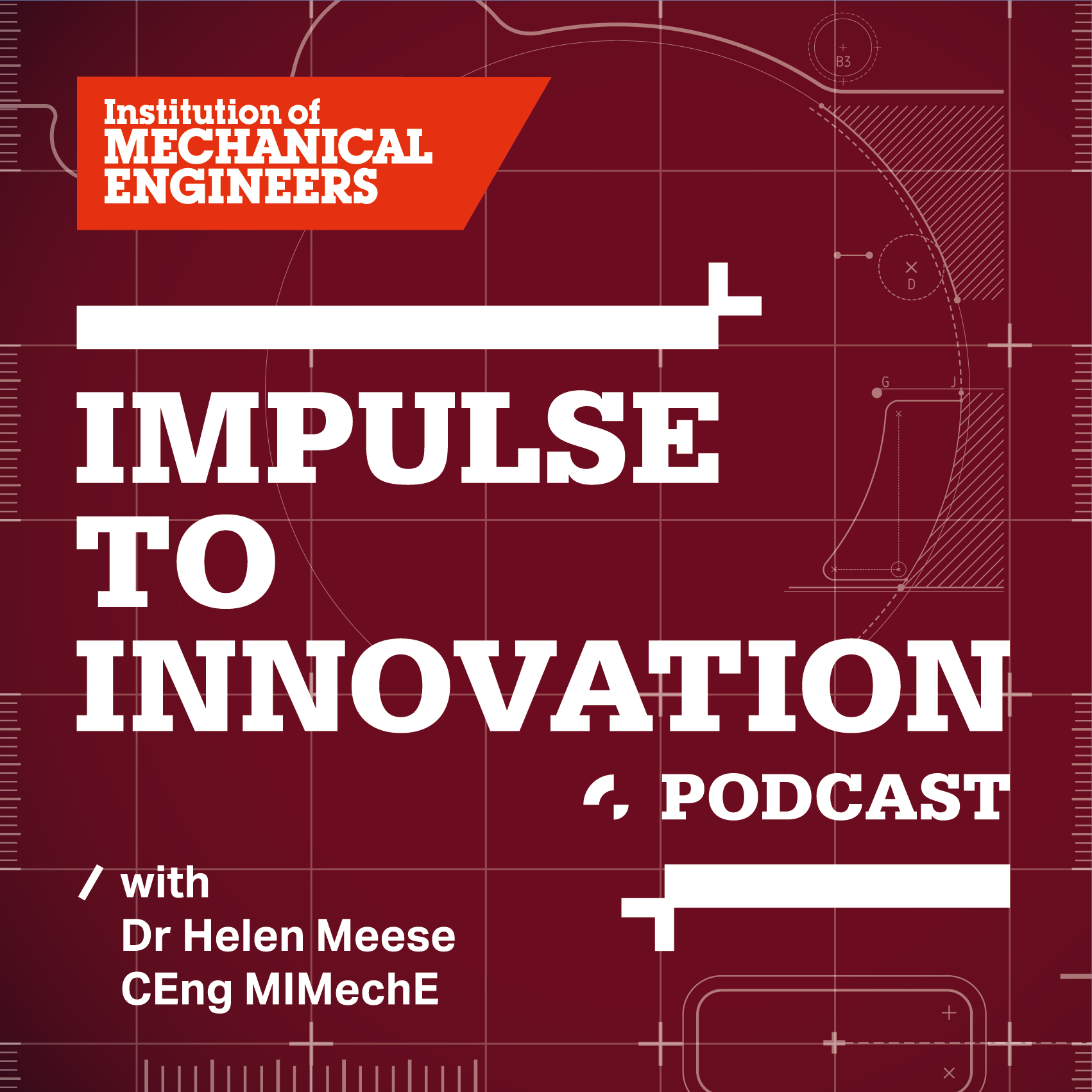Episodes
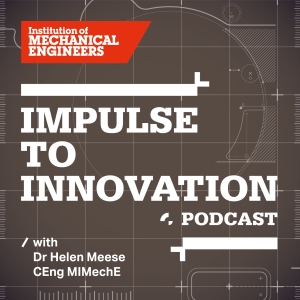
Wednesday Dec 01, 2021
Season 2 Special Episode: The Future of Birdcage Walk Headquarters
Wednesday Dec 01, 2021
Wednesday Dec 01, 2021
Our iconic Birdcage Walk building is 122 years old, and like many old structures it is in need of extensive refurbishment and modernisation for the Institution to continue to be able to use it and to make it fit for the next 122 years.
In this episode Helen discusses what lies ahead for our London-based home, and why it is so important to our 120,000 members.

One Birdcage Walk was opened in May 1899 as the Institution’s new HQ. In 1909, the Institution bought Storey’s Gate Tavern, which along with an earlier purchase of 5 Princes Street meant IMechE HQ could expand eastwards. In 1958, IMechE bought 3 Birdcage Walk and the two buildings were formally joined in 1960. In recent years 3 Birdcage Walk has been used as offices for staff and tenants while Birdcage 1 has been a home for the membership; with meeting rooms, our beautiful library and lecture theatre.
Doing nothing to the building is not an option as the work has now become urgent and it has been estimated that to bring the building up to the standards expected of an international headquarters it will cost around £16m to complete.
The Real Estate Strategy Group (RESG), set up to identify possible way’s forward, is headed by Trustee Helena Rivers whose expertise is in the heritage building sector. The group has looked at a number of options for the building and taken advise from a range of experts in the subject.
RESG’s strong recommendation is to sell a 250-year lease of 3 Birdcage Walk to provide funds to refurbish 1 Birdcage Walk, and hopefully also generate a cash surplus. This proposal has the full backing of the Trustee Board, Finance Board, Audit & Risk Committee and Strategy Committee.
In Quarter 3 of 2020 the RESG undertook a limited consultation involving Council, Young Members Board, Past Presidents and Trustee Board. Overall, there was similar feedback from each group. The survey found 73% in favour of retaining 1 Birdcage Walk and 27% against. Asked if HQ should be relocated, 54% favoured a headquarters in London versus 46% supporting regional hubs. These results showed strong support for keeping our HQ at Birdcage Walk, but how does the rest of the membership feel about this?
The consultation has now been widened to gain as much input from members as possible on this historic decision.
Helen spoke with Alice Bunn, IMechE CEO, Helena Rivers, RESG Chair, Terry Spall Past President and David Nowell, Trustee, to find out more about the proposed ideas and what a refurbishment of the building would offer to members in the UK and overseas.
Useful Links:
Proposal & FAQs https://www.imeche.org/docs/default-source/1-oscar/proposal_overview_faq_2021_01_11.pdf?sfvrsn=2
Webinar Slides https://www.imeche.org/docs/default-source/1-oscar/webinar-resg-final.pdf?sfvrsn=2
Concept Designs for BCW https://www.imeche.org/docs/default-source/1-oscar/About-us/indicative-concept-designs.pdf?sfvrsn=2
Feedback and questions can be sent to birdcagewalk@imeche.org
We would love to hear your thoughts and comments on this episode . If you would like to get in touch, email us at podcast@imeche.org
You can find more information about the work of the IMechE at www.imeche.org
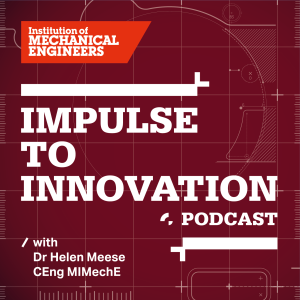
Tuesday Nov 02, 2021
Season 2 Episode 10: Building a New Way of Living - 3D Construction Printing
Tuesday Nov 02, 2021
Tuesday Nov 02, 2021
In this month’s episode, we are investigating the growth of 3D construction printing and what benefits it may offer to a world with growing populations and ever-reducing resources.
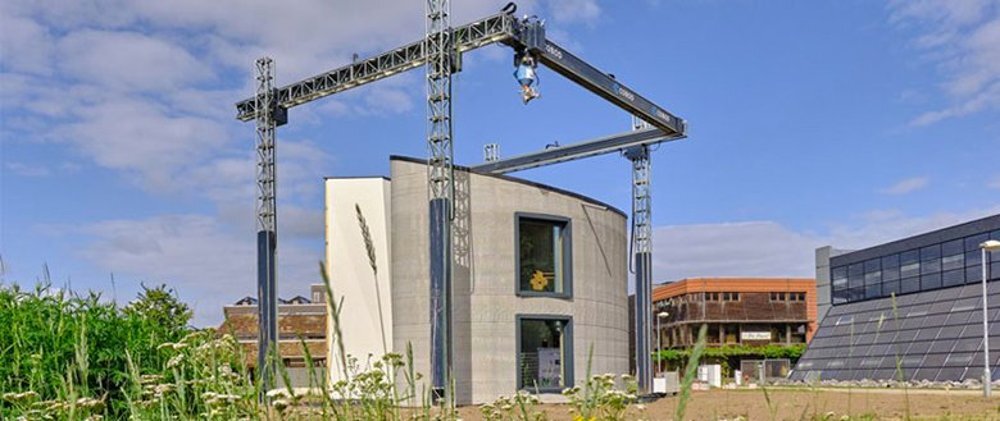
Despite the collapse of construction activity during 2020 as a result of covid, the industry is already on a path to rebuild its lost revenue in 2021. It is estimated that the value of global construction output will increase from its $11.6 trillion level in 2020 to around $14.8 trillion by 2030.
Around 43 million new homes will be required each year globally between now and 2030, with 11 million of these being in India, 7 million in China, 2 million in Nigeria and 1.5 million in the US. China will, for the foreseeable future, remain the largest construction market globally, however many developing countries are driving progress in construction as a result of investment in infrastructure and housing projects to sustain economic growth.
Construction output in the UK is more than £110 billion per annum and accounts for around 7% of the UK’s economic output. Approximately a quarter of construction output is in the public sector and three-quarters is private sector with the industry directly providing jobs for approximately 3 million people that’s about 10% of total UK employment.
Interestingly, in high income nations, there has been a increase in the demand for faster infrastructure development using technologically advanced machines and equipment, with the objective of reducing completion times and material handling costs as well as carbon footprint. This has led to innovations in construction processes which only a few years ago, were considered outside the mainstream. One such technique is that of 3D construction printing or 3DCP.
3DCP covers a whole range of technologies that use 3D printing as a core method to fabricate buildings or construct components, often using industrial robots, gantry systems and tethered autonomous vehicles. There are a variety of 3D printing methods used, which include extrusion; applying concrete/cement, wax, foam, or polymers; powder bonding using polymer bond, reactive bond, or sintering techniques, and additive welding.
Despite what you might think, the concept of 3D construction actually began to gain momentum in the 1980’s but it wasn’t until the mid 90’s that construction at scale, using techniques we now recognise as 3d printing, began to emerge as commercially viable processes.
Over the ensuing decades academia and industry have worked together to refine the techniques and learn more about material properties and the stability of printed structures and engineers have pushed the boundaries of what was once considered impractical or even impossible.
In 2016 the first 3d printed footbridge was constructed in Spain, demonstrating not only the possibilities the technology offered, but also that exact deposition of material, only where it was needed, could significantly reduce the amount of raw materials required. 2017 saw the first 3d printed permanent building constructed, which received all the appropriate building permits and in 2018 the 3d process was used to create a fountain in Russia.
And just a month ago, the IMechE reported the completion of an 18-month project in Italy to 3d print housing structures made entirely from soil adjacent to the building site. The construction of the dome-shaped houses took just over 200 hours. While there is some way to go before this concept is commercially viable, the team carrying out the work hope that it has demonstrated what can be achieved using natural materials, especially in inaccessible locations or poor areas of the world, with little effect on the local environment.
So as our global leaders head home after COP26, having discussed issues including infrastructure, the build environment and our energy use, how will disruptive innovations such as 3DCP become mainstream and will such potentially sustainable processes be incorporated into their climate change strategies, if at all.
Helen sat down with chartered civil engineer Colin Evison to find out more about 3D construction printing, how it all works and what innovative application it might be used for in the future, including the possibility of building homes on mars!
Colin is a Fellow of the Institution of Civil Engineers (just across the road from Birdcage Walk) and also a Fellow of the Institution of Engineering and Technology. In his role as Head of Innovation at BAM Nuttall he has been engaged with 3D concrete printing over the last few years. His interest in 3D printing began when he had small scale architectural models produced to help explain the intent for projects such as the Victoria Station and Tottenham Court Road Station Upgrades on the tube.
Colin is very passionate about this emerging form of construction and as he said in our interview, “Its potential as a building technique is probably only limited by our imagination and the efforts of engineers to solve the challenges that remain.”
Useful Links:
https://www.designingbuildings.co.uk/wiki/Global_construction_market_projections_from_2020_to_2030
https://www.emergenresearch.com/industry-report/construction-market
We would love to hear your thoughts and comments on this episode and the Construction Industry. If you would like to get in touch email us at podcast@imeche.org
You can find more information about the work of the IMechE at www.imeche.org

Monday Oct 04, 2021
Season 2 Episode 9: ‘Marginal Gains‘ - Engineering in Sport
Monday Oct 04, 2021
Monday Oct 04, 2021
In this months episode, we are exploring the world of engineering in sport and how sports technology is not just improving the performance of elite athletes but is having an effect on ordinary fitness fans and even medicine and healthcare.
Sports engineering is the technical application of physics, mathematics, biomechanics, computer science and even aeronautical engineering to solve sporting problems. According to the international sports engineering association, sports engineering includes tasks such as designing equipment, building facilities, analysing athlete performance, regulating standards and safety requirements and developing coaching tools.
It could be argued that the use of technology in sport began as far back as the ancient Olympics when chariots were used for racing and athletes competed in the pentathlon; which did involve wearing armour.
But modern sports technology really began to appear in the 19th century and commercially available examples of innovative equipment such as tennis racquets, golfing equipment and cricket helmets were on show at the great exhibition of 1851. But it wasn’t until 1998 that Professor Steve Haake of Sheffield Hallam University founded the international sports engineering association, thus formalising sports engineering as a disciple in its own right.
Today, there very few sports that do not involve some kind of engineering, and the typical sports engineer works directly with the athlete to monitor and measure their performance, behaviour and interaction with said equipment, to ensure they are at the peak of physical fitness. It’s safe to say that many of the sports brands we see sponsoring events or even have in our gym bags, would not be the big names we know today without the work of sports engineers.
So what kind of work are sports engineers doing today?
Useful links:
https://sportstechnologyblog.com/2021/01/19/what-does-a-sports-engineer-or-technologist-do/
http://www.sportsengineering.org/
https://journals.sagepub.com/home/pip
https://www.prescouter.com/2021/08/tokyo-summer-olympics-what-are-the-hottest-tech-innovations/
Helen spoke with engineers Andy Harland, Professor of Sports Technology and director of the Sports Technology Institute at Loughborough University, and Dr Tom Allen senior lecturer in sports engineering at Manchester Metropolitan University.
Andy is a chartered mechanical engineer and is involved in research across a broad range of topics including measurement and instrumentation, product design and development, injury prevention and simulation. He has worked on a number of projects concerned with sports footwear, apparel and protective gear.
Andy’s research in soccer balls has been applied by Adidas in tournaments including the FIFA world cups and UEFA European Championships and his research in cricket helmet impacts underpinned the revision of the British Standard 7928:2013; Specification for Head Protection for Cricketers.
Useful Links:
https://www.lboro.ac.uk/research/sti/
https://www.lboro.ac.uk/research/sti/working-with-us/case-studies/
Dr Tom Allen is also a chartered mechanical engineer and his research is focused on the effect of sports engineering and technology, in terms of performance, participation and injury risk.
Tom applies Computational Mechanics and Computer Aided Engineering to his analysis as well as understanding the application of materials and the impact they have on performance. Tom is also the Editor in Chief of the ISEA’s Sports Engineering journal.
Useful Links:
https://www.mmu.ac.uk/engineering/staff/profile/index.php?id=2248
https://www.springer.com/journal/12283
We would love to hear your thoughts and comments on this episode or about your experiences, interest or work in sports technology. If you would like to get in touch email us at podcast@imeche.org
You can find more information about the work of the IMechE at www.imeche.org

Monday Sep 06, 2021
Monday Sep 06, 2021
In this months episode, we focus on the brewing and distilling industry, which is part of the hygienic process industries sector, which also covers industries such as food, pharma and biotech.
Brewing and distillation have been part of our way of life for over a millennia; with the earliest records of both processes being found in Mesopotamia.
Useful Links:
https://en.wikipedia.org/wiki/Brewing
https://en.wikipedia.org/wiki/Distillation
http://se.asee.org/proceedings/ASEE2013/Papers2013/175.PDF
While the methods of both distilling and brewing have largely remained unchanged over time, refinements to the processes by which the raw ingredients are handled and combined, has resulted in a multitude of flavours and colours of both alcoholic and now non-alcoholic drinks. Despite the unprecedented impact on the global hospitality sector as a result of the COVID pandemic, appetite for beer and spirits remains strong.
Today's brewing and distilling manufacturers rely on a raft of complex technologies covering raw materials handling, production, and waste handling. In each of these, accurate control of product flow is essential to ensure the final product quality is consistently high. This requires multidisciplinary teams covering chemistry, biology and even agriculture to ensure products reach the market in a consistent and safe way for the consumer. But where does the engineer come into this?
Well, process optimisation and increased efficiency have been a priority for many brewing and distilling companies over recent decades, and Process engineers have been central to those improvements, developing technologies such as on-line process control, in-place cleaning and energy recovery from steam or fermentation, as well as gaining a greater understanding of fluid flow.
Even before a brewery or distillery is built, the engineers are working to understand the requirements such as grain capacity, the size and number of cookers and fermenters and type of still in the case of distilling, as well as Basic Piping Design and sizing. And most important of all, Electrical and Mechanical Engineers determine the power requirements for conveyors to move the grain; mills for grinding; agitators for cookers, fermenters, and beer tubs. As well as the countless pumps and motors that move the fluids throughout the facility.
It’s safe to say that we wouldn’t be able to imbibe our favourite tipple today without the input of the process engineer.
Helen's guests this month are George Crombie, Engineering Director for Briggs of Burton. He is responsible for all engineering and automation activities at Briggs and has worked on a number of high-profile global projects across brewing, distilling, spirit storage & packaging, foods and pharmaceuticals. George is a fellow of the IMechE and a Member of Institute of Brewing & Distilling.
Marina Ferreira is a chemical engineer. She is a technical specialist and laboratory manager in the Food & Beverage division at Pall Corporation. Marina is passionate about craft brewing and is a home brewer herself. In her work she develops methods for filtering brewing products to enable her customers to create new and improved products. Marina shares her thoughts on health & safety and innovation across the industry.
https://www.linkedin.com/in/marina-santos-ferreira-3845a997/
We would love to hear your thoughts and comments on this episode or about your experiences, interest or work in the food & beverage industry. If you would like to get in touch email us at podcast@imeche.org
You can find more information about the work of the IMechE at www.imeche.org
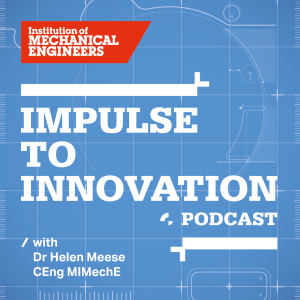
Monday Aug 16, 2021
Season 2 Episode 7: The High Flyers - UAS Challenge 2021
Monday Aug 16, 2021
Monday Aug 16, 2021
In this months episode, we continue the theme of the IMechE engineering challenges focusing on the unmanned aerial system or UAS Challenge. The event is held in mid-July at the British Model Flying Association’s national centre, Buckminster. This event sees teams of university students design, build, test and fly an unmanned aircraft system scoring points across these different segments to win the competition. So, while Helen was busy preparing for our live Formula Student podcast, the Institution’s Young Members were out recording the highs and lows at UAS.
The University of Surrey were crowned grand champions this year, with an impressive combination of scoring across their reports and autonomous flights during the event, even recovering from a crash to have a fourth attempt at the release of the AirDropBox system. Loughborough University only just missed out on the top spot due to a rather terminal crash, but they did manage to scoop up the majority of awards in Innovation, Design, Safety, and Operational Supportability.
There was also a virtual competition where teams could submit their designs online in lieu of them being able to attend in person. This enabled international teams to compete and gain recognition for their work despite Covid restrictions. Teams from Pakistan, Sri Lanka and Greece secured some of these virtual competition awards with India’s Team WRise from the University of Petroleum and Energy Studies in first place.
Stephen McLaughlin, YMB aerospace division representative and one of the UAS judges was on site, to talk with Paul Lloyd, Chair of the UAS Challenge, Phil Briggs, from QinetiQ one of the event sponsors, Kristina Lindon UAS project manager and one of the Imperial College London team members.
Useful Links:
https://www.imeche.org/events/challenges/uas-challenge/about-uas-challenge
https://www.imeche.org/events/challenges/uas-challenge/team-resources/video-recordings
We would love to hear your thoughts and comments on this episode and the IMechE Challenges. If you would like to get in touch email us at podcast@imeche.org
You can find more information about the work of the IMechE at www.imeche.org
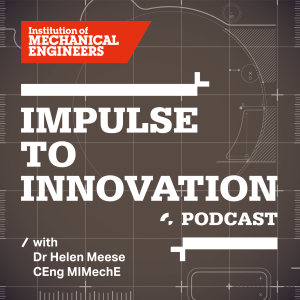
Friday Jul 30, 2021
Season 2 Live Episode - Formula Student 2021
Friday Jul 30, 2021
Friday Jul 30, 2021
Helen was joined by the IMechE's audio-visual engineer, Syed Ansar in the second of our podcasts this month which was recorded live on the 23rd July track-side at Silverstone Park.
This was I2I's first live show with members listening in around the world.
Helen and Syed spoke with special guests.
Sam Collins - FS Commentator and F1 Broadcaster
Will Snyder - Sales Engineer at IPG Automotive UK Ltd (FS Sponsor)
Wayne Morse - Recruitment Specialist at BMW (UK) Manufacturing (FS Sponsor)
Dr Andrew Deakin - Chair, Formula Student
Rob Porter - Head of Events & Member Engagement, IMechE
Several of the guests had also taken part in FS as student undergrads and their passion for the event was tangible. Helen explores the reasons why it is such a popular competition, why automotive companies are so keen to be involved and sponsor the event, and what the future holds for this incredible competition in the future.
We would love to hear your thoughts and comments on this episode and the IMechE Challenges. If you would like to get in touch email us at podcast@imeche.org
You can find more information about the work of the IMechE at www.imeche.org

Monday Jul 05, 2021
Season 2 Episode 6: Exploring the IMechE Challanges
Monday Jul 05, 2021
Monday Jul 05, 2021
This month we are posting not one, but two episodes! to celebrate the Instituion's Challenges.
We have finally reached the summer and we don’t know about you, but this year seems to have gone pretty fast so far.
Despite being in a kind of limbo, between pre-2020 normality and a new 2021 blend of virtual and physical working, the team here at I2I are pleased to see some of the IMechE events returning to the calendar and especially the IMechE Challenges, aimed at young engineers across the globe.
From the 21st to the 25th July, all eyes will be on formula student, as it kicks off at the Silverstone circuit after a year’s hiatus. This year their are only 40 teams competing and it is not open to the public as it usually would be, but that will not deminish our excitment.
I2I will be right there, coming live from the competition.
This will be our first live broadcast and we are hoping to have some special guests and a ‘phone in’ for you, our listeners, to ask questions about the FS challenge and the Instituion's other comeptitions.
More details on that closer to the day, so keep your eyes on the I2I podcast page at www.imeche.podbean.com
The Railway challenge was live again on the 25th - 27th June after also taking a year off due to COVID. The event is held at Stapleford miniature railway in the grounds of Stapleford hall, and also included a virtual segment this year, to enable teams who were not able to participate, the opportunity to get involved.
The University of Huddersfield’s HudRail team were the overall winners of challenge, the RCAS team from the University of Sheffield took the runners-up spot and the Alstom & University of Derby team were in third place. Thanks goes to all the hard work of the railway division and their trackside volunteers.
The design challenge for 1st year engineers, the Automation challenge for apprentices and the UAS challenge take place later in the year, around September/October, so keep an eye out for all of those.
You can find details of all the challenges at www.imeche.org/events/challenges
So, to get you in the spirit of the season, Helen's first podcast this month was recorded with Lydia Amarquaye, IMechE Education Policy Advisor.
Before joining the IMechE as a member of staff, Lydia was an active member and chaired the YMB in 2017. As part of her role on the Manufacturing Industries Division Board, she was involved in helping to devise and establish the Apprentice Automation Challenge. So she is well placed to talk about this exciting part of the IMechE’ s STEM engagement.
We would love to hear your thoughts and comments on this episode and the IMechE Challenges. If you would like to get in touch email us at podcast@imeche.org
You can find more information about the work of the IMechE at www.imeche.org

Monday Jun 07, 2021
Monday Jun 07, 2021
In this month's episode we discuss the IMechE's drive towards greater equality, diversity and inclusion in the engineering profession and why during Pride Month here in the UK, it is important for us to come together as a community and recognise the variety of differences that makes up our engineering world.
“When we listen and celebrate what is both common and different, we become a wiser, more inclusive, and better organization”. This is a quote from Pat Wadors, Chief People Officer for Procore Technologies and passionate ED&I advocate.
And that idea of commonality, as well as being uniquely individual, is what unites the 120,000 members of the IMechE. But a year of unprecedented changes to our lives and workplaces as well as the shocking racial attack on George Floyd in America, have sparked a sea change in the way we think, speak and see equality, diversity and inclusion. This of course is not something that is new to those who have been campaigning for change across gender, sexual orientation or race for decades. But this convergence of events have triggered a retrospective process across many aspects of society.
So, where does the engineering community come in to this?, and how does it effect, not just the IMechE’s members but the millions of engineers world-wide?
In 2020 the Institution formed its diversity and inclusion committee, chaired by Isobel Pollock-Hulf OBE. It was made up of members and staff with a wide variety of experiences and knowledge on D&I matters. In February this year, the committee launched ‘A Case for Change’, its Diversity & Inclusion strategy report for 2021-2025. The report aims to “support our vision, culture, foundations and goals across our employee and membership base.” And is “about people developing a sense of belonging, feeling respected and valued for who they are.” So, how will this report translate into real actions? and what effects will it have on our engineering community?
My guests this month are Dr Shini Somara, Carly Nettleford, and Dr Mark McBride-Wright.
Shini is a Mechanical Engineer & Fluid Dynamicist turned international TV presenter, Children's Book Author, Podcaster, public Speaker and Mentor. She is passionate about making science & technology accessible to all and has turned cutting-edge science into heartfelt and informative television; reporting on challenging subjects such as climate change, food, health, energy, and the physics of dark matter.
Carly joined the IMechE as an Engineering Policy Officer in April 2020. She works with the policy advisors and IMechE’s expert member groups to help shape the debate across the field of engineering policy. Carly began her engineering career in 2012 on a pre-apprenticeship programme and Completed her apprenticeship in just two years, being recognised for her achievements by winning the Apprentice of The Year award for West London. She has worked in construction and in biomedical engineering and is now a chartered Eng Tech.
Mark is a chartered chemical engineer specialising in health and safety in the oil and gas and defence industries. He is a recognised leader in diversity and inclusion in the engineering and construction industry and is chair and co-founder of InterEngineering, an organisation which connects, informs and empowers LGBT+ engineers and supporters. Mark has authored a report for the UK Government on tackling homophobic, biphobic and transphobic bullying in engineering and is working with the UK Government on implementation of the report’s recommendations. So its no surprise that the IMechE asked Mark to facilitate engagement with staff and members for the D&I report.
We also hear from IMechE past president and D&I committee chair, Isobel Pollock-Hulf OBE.
Isobel has been promoting Engineering, Measurement and Manufacturing for over 30 years following a highly successful career with a number of large Yorkshire-based multi-nationals. She was the 127th President in 2012, only the second lady at that time. She is a visiting professor of engineering at Leeds University, She was Master of the Worshipful Company of Engineers, and is a Fellow of the IET and CGI. She was named as one of the Daily Telegraph’s Top 50 Influential Women in Engineering in 2016 and is a patron of the Women’s Engineering Society.
Useful Links:
https://interengineeringlgbt.com/
https://equalengineers.com/
http://www.drshinisomara.com/innervation-podcast.html
https://www.imeche.org/about-us/our-people/carly-nettleford
https://www.raeng.org.uk/diversity-in-engineering
We would love to hear your thoughts and comments on this episode and the IMechE's ED&I report. If you would like to get in touch email us at podcast@imeche.org
You can find more information about the work of the IMechE at www.imeche.org

Monday May 03, 2021
Monday May 03, 2021
This month’s episode is all about telecommunications.
The world of wireless comms has come a long way since Bell and Tainter first conceived the photophone in 1880. Today, we are literally surrounded by radio waves and it is believed that from that first intentional radio signal we sent into space in 1974 from Arecibo, our radio echoes can be heard across the galaxy some 100 light years away.
Back here on earth, the social revolution that occurred in the 1990s triggered by the development of digital wireless networks, is now part of our lives. And indeed, without such systems the last year, of isolation and lockdown, would have been even more unbearable. Today, wireless communications and our connected devices dominate our lives. But what are todays engineers working on that could possibly improve on our data-driven lives tomorrow?
Helen’s guests are Dr James Flint, Professor Misha Dohler and Rick Hanks. They share their thoughts on what wireless networks and communications means to them, and their anticipation of what is to come in the future.
Dr James Flint is a chartered engineer with the IET, Reader in Wireless Systems Engineering and Deputy Associate Dean of Teaching in The Wolfson School of Mechanical, Electrical and Manufacturing Engineering at Loughborough University. His research focuses on various aspects of wireless systems, and currently he is working on novel computing for sensors, the Internet of Things, and Energy Harvesting. He also has a keen interest in biomimetics, ultrasound and on converting systems found in nature into workable engineering solutions.
Helen talked to James about the advances in wireless systems, and how wearable technology and biomimetics will become an everyday part of our lives.
Useful Links:
https://www.lboro.ac.uk/departments/meme/staff/james-flint/
https://en.wikipedia.org/wiki/Wearable_technology
https://www.nature.com/articles/s41467-021-21701-7
https://www.newscientist.com/article/2205389-what-years-and-years-gets-right-about-the-future/
Mischa Dohler is Professor in Wireless Communications at King’s College London, driving cross-disciplinary research and innovation in technology, sciences and arts. He is a fellow of the IET, IEEE and the Royal Academy of Engineering as well as being a serial entrepreneur, composer & accomplished pianist. He is passionate about changing the way we interact with telecommunications and wireless systems through tactile and haptic technology, and is pioneering various novel concepts, which will become reality with 6G.
Helen asked Misha to explain why he is already working on 6G, when 5G is only just being adopted, and why he coined the term the Internet of Skills.
Useful Links:
https://mischadohler.com/academia/
https://mischadohler.com/piano/
https://www.thefuturefactory.com/blog/39
https://www.comsoc.org/publications/ctn/5guk-trials-distributing-live-orchestra-over-5g
Rick Hanks is the Smart Metering Lead and Industry innovation Principal Director at Accenture. He has extensive experience of implementing digital transformation, smart metering and business change projects within the utilities and communications sector and is leading the design of the smart metering communications infrastructure across the UK.
Rick is fascinated by the way in which wireless communications can change the way we use our energy resources. He shared his thoughts with Helen on what other technologies might benefit from wireless connections in the future.
Useful Links:
https://www.accenture.com/us-en/case-studies/communications-media/o2-telefonica-smart-metering-uk
We would love to hear your thoughts and comments on this episode or about your experiences, interest or work in telecoms and wireless systems. If you would like to get in touch email us at podcast@imeche.org
You can find more information about the work of the IMechE at www.imeche.org

Monday Apr 05, 2021
Monday Apr 05, 2021
In this month’s episode we explore how we keep society safe, what effect remote working has had on the way we manage and monitor our infrastructure and what engineers are doing to protect safety critical technologies from cyber-attacks.
We are constantly facing both present and emerging threats to our technical, organizational, societal and economic way of life. These threats can be natural, such as earthquakes or storms; man-made such as poverty or lack of resources; and in our ever-growing technology-driven world, they can affect our data and computer networks.
UK businesses faced over 600,000 breaches in their systems in 2020, that equates to an attempted attack every 46 seconds. Indeed it is believed that manufacturing companies account for nearly a quarter of all ransomware attacks, but equally, our healthcare systems are suffering similar security issues, with more than 93% of healthcare organizations experiencing a data breach in the past three years.
Living in such complex systems of systems, engineers are having to find new way to protect us from these threats and ensure we can absorb and adapt to the challenges as quickly as possible after the threat has passed.
Helen's guests are Andy German and Pete Stewart, both Resilience Engineers who work for Atkins, part of the SNC Lavalin Group.
Pete is a chartered engineer and fellow of the IMechE and a Board member of its Safety and Reliability Group. Pete’s career has focused on high hazard industries, particularly UK nuclear and Oil & Gas. He is currently the Discipline Lead and Chief Engineer for Nuclear Safety Assurance within the Resilience Engineering Practice.
Andy is a Chartered Engineer with the Institution of Engineering and Technology and is a member of Safety Engineering Technical Network. He works as the Professional Head of Discipline for Resilience Engineering including System Safety and Safety Critical Software within Aerospace, Defence, Security and Technology.
Useful links:
https://www.imeche.org/industry-sectors/safety-and-reliability-group
https://hazardsforum.org/maintaining-nuclear-safety-during-a-pandemic/
https://www.cdbb.cam.ac.uk/what-we-do/national-digital-twin-programme
http://sunnyday.mit.edu/STAMP-publications.html
We would love to hear your thoughts and comments on this episode or about your experiences, interest or work in resilience and safety engineering. If you would like to get in touch email us at podcast@imeche.org
You can find more information about the work of the IMechE at www.imeche.org

